Beer can take you to some strange and unexpected places. On Sunday I was in the sweaty backstreets of Baishizou, a faintly dodgy suburb in Shenzhen, southern China, visiting a cramped and not necessarily fully legal microbrewery on the ground floor of a somewhat scrubby apartment building. My mission: to help the brewery’s owner, a former US military man called Joe Finkenbinder, and another American brewer, Dave Byrn of the Pasteur Street brewery in Saigon, make the first ever Sino-Vietnamese collaboration beer, a black gose called Disputed Waters.
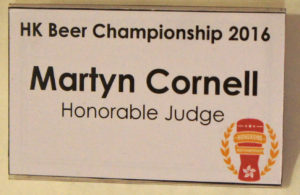
The trip to Shenzhen, a city that has exploded from almost nothing to 11 million people in only 30 years, happened because I had been invited out to its southern neighbour, Hong Kong, to be an “honorable judge” (that’s what it said on my name tag) in the first ever beer competition solely for commercial Hong Kong brewers. When I was working in Hong Kong in 2011 I helped get the city’s first beer festival some publicity, and the festival organiser, Jonathan So, became a mate. At that time there were just two microbreweries in the city, and one of those closed soon after, so that when I left Hong Kong in 2013 there was only one left.
Since then brewery numbers in the former British possession have taken off like the rockets the Chinese have been making for 800 years: ten by the end of 2015, and then doubling to 20 today. So when Jonathan emailed to ask if I would like to be a judge in the first Hong Kong beer championship, as part of the city’s fifth beer festival, I was straight onto Expedia looking up flight times, delighted to have the opportunity to finally try beer made by all the bastards who had cruelly waited until I left the city and gone back to London – where the new small brewery scene had also boomed in my absence – to start brewing commercially.
Then Joe Finkenbinder, who was also one of the judges, emailed to ask if I would like to cross the border into China, visit his brewing set-up, which is barely two years old itself, and take part in a collaboration brew with Dave Byrn. When you’ve already travelled 6,000 miles, a few extra don’t matter: and anyway, how many lifetimes have I got left to take the rare chance to visit a Chinese microbrewery?
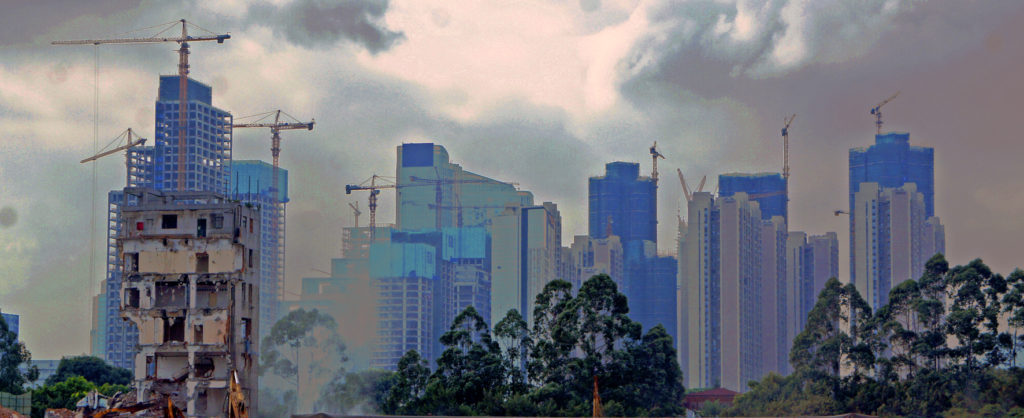
Finding Joe’s brewery, which is called BionicBrew, was its own adventure: I had downloaded and printed a map before I left Hong Kong, and the nice people at my hotel in Aberdeen, on the south side of the island, wrote instructions on it in Chinese: but the taxi driver I picked up at the Huanggong border crossing (after being stiffed 304 yuan – about £25 – for a one-day visa) still got wildly lost, leaning out of the window to shout questions at street cleaners in big conical hats and guards in security booths: you didn’t need to speak Putonghua to understand their replies, clearly variations on “never heard of it, mate.” Eventually it occurred to him to copy the address onto his phone and search for it on the Chinese version of Google Maps. Five satnav-guided minutes later and I was out of the taxi and in the street where BionicBrew’s taproom bar was based.
Except that I wasn’t: I was actually in the next street along. But St Arnold was looking after me: in the mini-coach that has brought me from Hong Kong to the border I had met an American who teaches young Shenzhen science postgraduates at the local university how to write their theses and doctoral submissions in good scientific English. He knew the brewery, had been to its own beer festival two weeks ago, and had told me the taproom was based in a pedestrianised street lined with restaurants. This clearly didn’t match the alle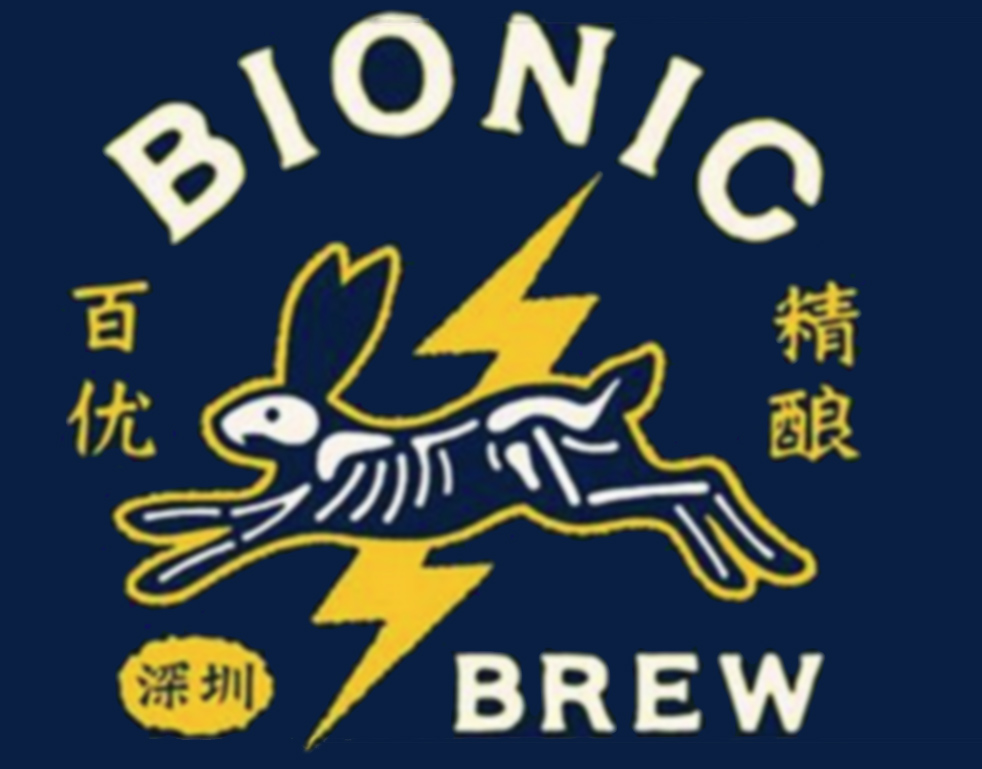 y I was now in: but when I walked round the corner, I found the target. No Joe, though: the shutter was down on the bar. He had not received my messages saying I had arrived in Shenzhen. Still, clouds, silver linings: while I waited for him in the Guangdong heat, I walked out into the main road and found a supermarket that was selling, to my delight, Snow beer. Not that Snow beer is delightful, it’s a bland straw-pale lager, but it’s the biggest-selling beer in China, and therefore the world, and I had never drunk it, as you can’t find it in Hong Kong. It’s a bizarre boast, I know, but I have now drunk the most popular beer on the planet and I bet you haven’t.
y I was now in: but when I walked round the corner, I found the target. No Joe, though: the shutter was down on the bar. He had not received my messages saying I had arrived in Shenzhen. Still, clouds, silver linings: while I waited for him in the Guangdong heat, I walked out into the main road and found a supermarket that was selling, to my delight, Snow beer. Not that Snow beer is delightful, it’s a bland straw-pale lager, but it’s the biggest-selling beer in China, and therefore the world, and I had never drunk it, as you can’t find it in Hong Kong. It’s a bizarre boast, I know, but I have now drunk the most popular beer on the planet and I bet you haven’t.
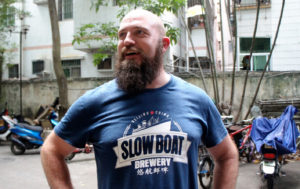
When I got back to the bar, Dave Byrn had turned up, along with his sales manager from the Pasteur Street brewery, Mischa Smith, a rotund, chuckling former barman from Ontario via South Korea. Dave, previously of Cigar City Brewing in Florida, looks like the photograph you’d find in a picture dictionary under the entry “American craft brewer”: big, muscular, bushy-bearded and bald-headed. I had barely consumed any of my Snow when Joe arrived, accompanied by his brewer, a thin, blond, friendly Russian called Dmitrii Gribov – Mitch for short – from the city of Perm, in the Urals. A trestle table from outside the front of the bar was dragged into the shade in the centre of the street and a large jug containing an excellent American pale ale brought out from Joe’s bar, and as local children ran about playing ball games and ignoring the international collection of gweilos in their midst, we talked about the problems and promises of the Asian microbrewing market (number one threat: finding suitable premises; number one opportunity: the growing desire of increasingly wealthy consumers in the East for craft beer); how the rapid growth of Shenzhen means buildings are constantly being torn down and new, taller ones whipped up in their place (right opposite Joe’s street was a large open space where, he told us, a big and not particularly old building had stood until last month, when it was demolished to make way for something newer: in the distance, through the smoggy haze, more tall buildings, each accompanied by cranes, could be seen rising skywards); and why there was a brewpub called Peko immediately next door to BionicBrew’s bar (Joe actually leases the space to Peko, having decided the entire premises he was renting was too large for his own sole use.)
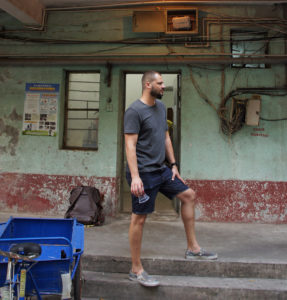
Another jug of excellent beer later, it was time to walk the short distance to the brewery. This is easily the strangest brewery premises I have been in: two adjacent apartments on the ground floor of a tall and rather run-down block of flats in the middle of a residential area. When Joe was first shown round by the landlord, families still lived in them. Astonishingly, the other residents don’t seem to mind having a brewery in the heart of their apartment block, though apparently there were some complaints about the smell of hops when it opened, to Joe’s surprise: “That’s the best smell there is!”, he says. The space is cramped, but Joe and his team are making terrific beers from a mixture of home-made and manufactured-in-China kit.
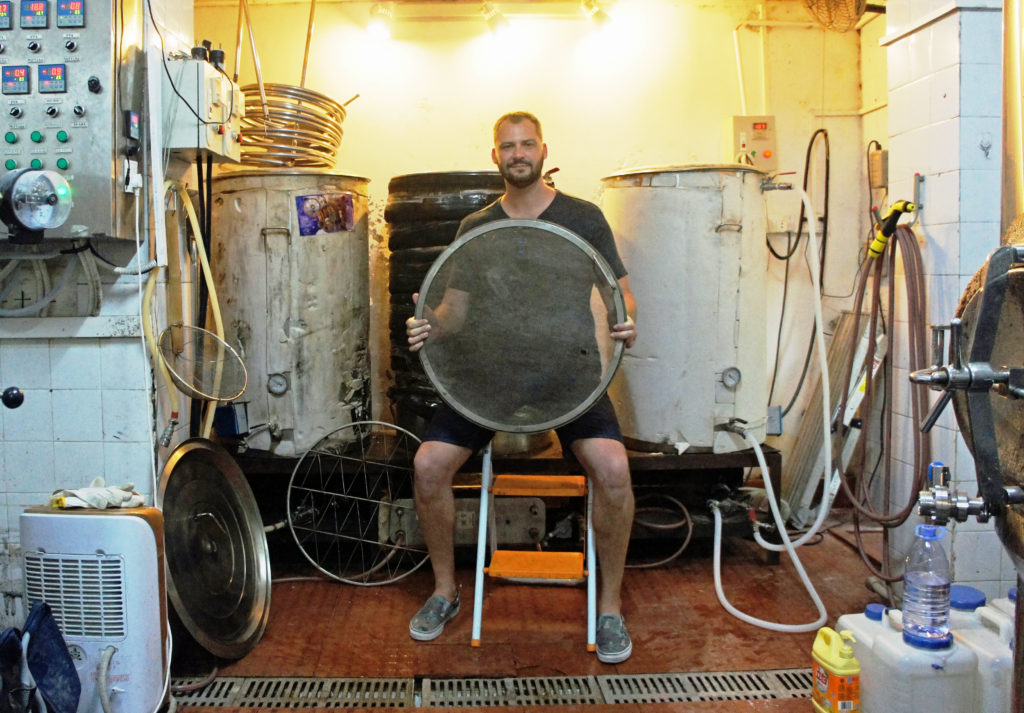
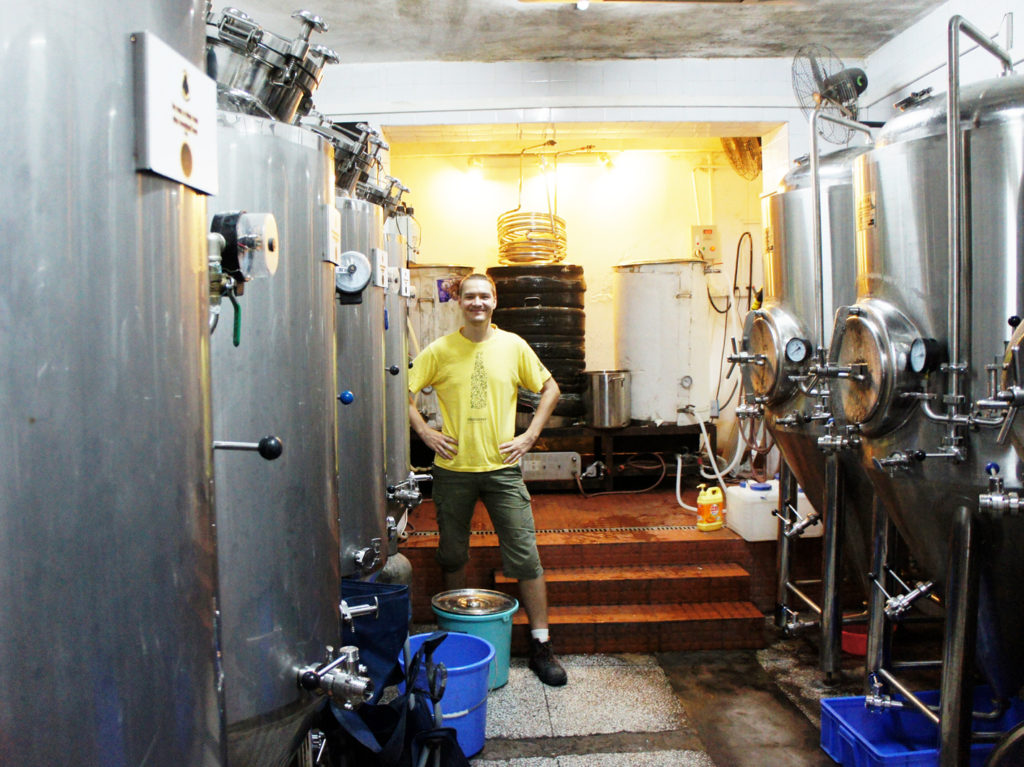
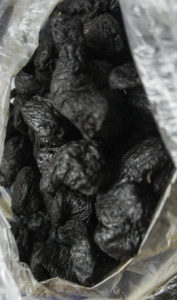
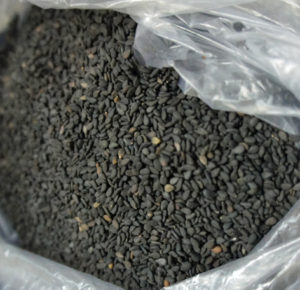
The collaboration beer we were there to brew was named in reference to the dispute between Vietnam and China over the Paracel Islands and Spratly Islands in the South China Sea, with each country claiming ownership of the two archipelagos. Since the islands are in the middle of the salty sea, then Disputed Waters needed to be a salty beer – a gose, Leipzig’s great contribution to world beer styles. And since this was East Asia, it needed Asian ingredients alongside the hops and malted wheat and barley. As an extra twist, this was a black gose, about which there is bound to be dispute (geddit?), so to go with the two per cent of melanoidin malt the added ingredients were black as well: black sesame seeds, black soy sauce, for saltiness and flavour, and dried black plums, which I believe were wu mei, otherwise known as Chinese plums, Prunus mume, used in Chinese medicine and described as sour, and astringent in flavourTi Huang, or Chinese Foxglove, Rehmannia glutinosa, whose bitter-sweet roots, looking like prunes, are used as a blood tonic. (There was meant to be Vietnamese sea salt in the brew as well, but la la, the guys from Ho Chi Minh City had left it behind …)
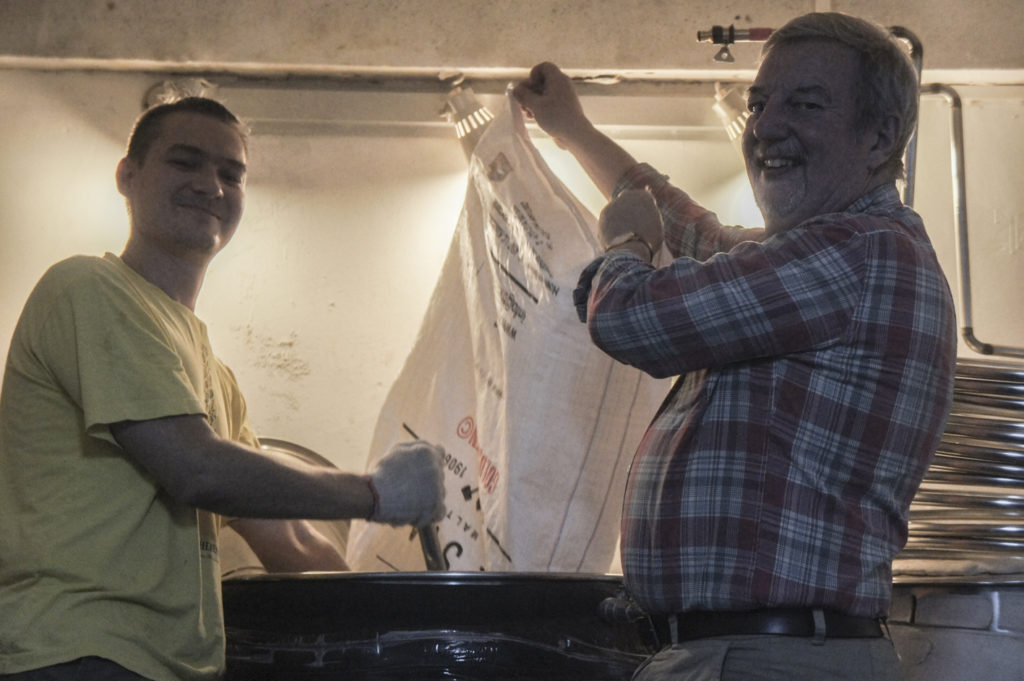
Alas, alas, like Cinderella I had a midnight deadline, which was when my pumpkin coach, in the shape of a Virgin Atlantic Boeing 787, was taking off from Hong Kong Airport to fly back to London, where I had to be at work the next morning. To allow for getting through the Shenzhen traffic and possible delays at the border, I needed to leave early, with just enough time to pour some of the malt into the mashtun and thus claim I too had collaborated in the brew, and no time at all, sadly, to go back to Joe’s bar and enjoy more beers and more chat about brewing. If you’re reading this in a few week’s time and you drank Disputed Waters, please leave a comment on how it tasted.
I’d like to thank Joe and his team for their tremendous hospitality and friendliness, which could not have been bettered (just like the beers), and also thank Jonathan So very much indeed for inviting me back to Hong Kong and providing me with free accommodation. If you’re in Shenzhen, or even Hong Kong, do go and visit the BionicBrew taproom, you won’t regret it.

I must admit if I saw Snow I’d be on it like a shot.
Rotund?!
True enough. Very nicely written!
Very unfair of me, as I’m “cushion stuffed up my jumper” myself
I’m actually more curious on your take on the HK brewing scene. Favorites?
I didn’t really have the opportunity to drink in depth and at length to make that sort of decision: at the beerfest sessons I was trying to make sure I interviewed every HK brewery there, and whle I drank their beers I wasn’t paying huge amounts of attention. But Young Master clearly deservers its reputation, I liked Yardley Brothers, who seemed to know what they are doing, City Brewery has a nicely left-field approach which appealed to me, the new(ish) guys at Hong Kong brewery were competent and professional, which meant, of course, the Gweilo beers were good too, and I liked Black Hawk as well.
Great! Its amazing to see how craft beer is spreaded all over the world.
Erm …well, yes, I presented Snow at a beer tasting in Australia probably a couple of years ago now. A truly unremarkable beer which I’d almost forgotten about now.
Great article, Martyn! After almost 3 days of souring in the kettle the wort has just been finally transfered to the tank. I’ll post some pictures later. BTW, the dried black mass seems to be dried Shu Di Huang Or Rehmannia Glutinosa Root
Martyn, another great article! The brew has almost finished fermenting. The blow-off was outstanding and lasted for 3 days filling one bucket after another. Never seen anything like this. Refer it to the enormous amount of FAN we added with soy sauce.
Woah! I SO want to try this beer!
A classic China tale! Terribly curious to try that beer.
“a gose, Leipzig’s great contribution to world beer styles.”
Well actually it was Goslar 🙂 Leipzig or Döllnitz to be exact came pretty late to the party.
Mmm, but which place made it famous?
It was quite famous in Goslar but id died out there in 1860. It was one of the only spontaneous fermented beers that survived for so long. The rest was all trying to copy the Gose from Goslar. The biggest time it had from 1500-1800. Leipzig was the place where the mixed fermentation Gose was surviving till 1950. It was also very famous there but since it was consumed fresh it did not travel well. That is also the reason why the citys are so tightly linked to the Gose. Döllnitzer, Leipziger, Goslarsche, Quedliner etc. But Birthplace and reason for it’s success was Goslar. Leipzig has the most coverage since it survived there long enough to be documented properly. If you want to have a look how popular it was: https://books.google.de/books?id=bn7YrgH8ilcC&hl=de
Cheers!
I just had this at the Bionic popup in Shekou. It’s quite good, especially after a long walk on a hot, humid day.
My only previous experience with a Gose is the Lost Nation Gose from Vermont – this one is every bit as good, if considerably darker. I’d never even heard of a Black Gose.
And the story behind it is very entertaining. Well done.
[…] How I helped brew a black gose in the backstreets of Shenzhen […]
[…] https://www.zythophile.co.uk/2016/11/22/how-i-helped-brew-a-black-gose-in-the-backstreets-of-shenzhen/ […]